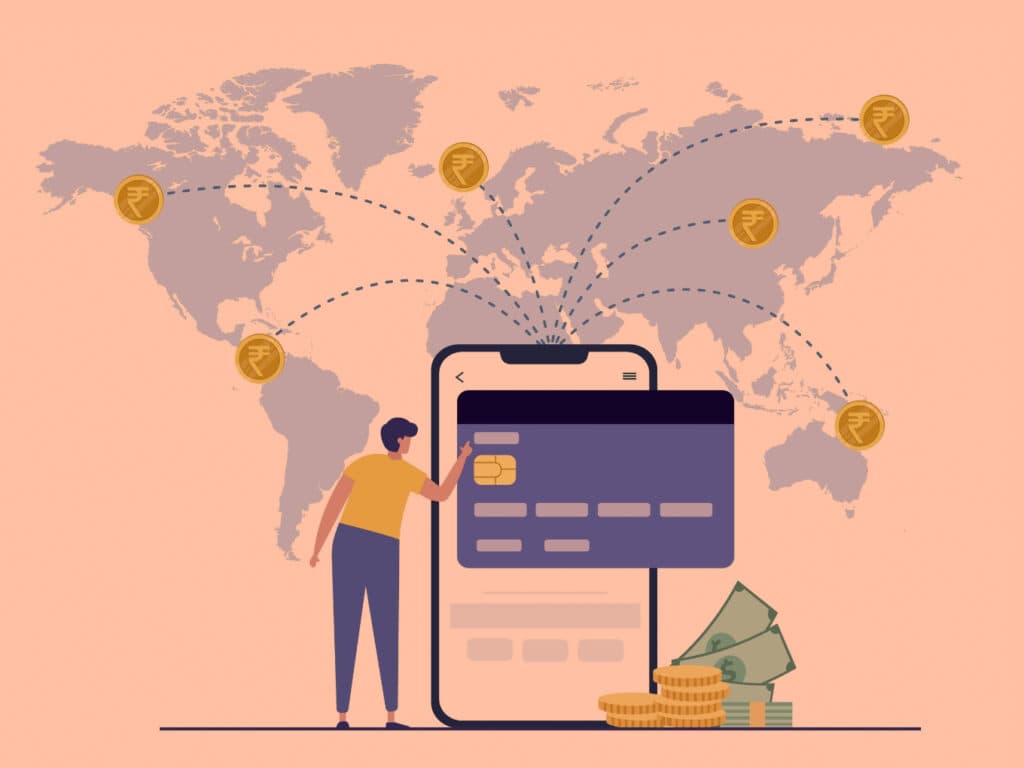The world of payments is evolving at breakneck speed. The demand for instant payment systems is surging, reshaping the way businesses and consumers transact across borders and barriers.
In this article, we will delve into the transformative shift towards global interconnectivity in payment systems, exploring key trends, the complexities involved, and its profound impact on future financial strategies.
Cross-Border Payments: Key Trends
Global Interoperability
Cross-border payment transaction flows have witnessed a remarkable 13% increase from 2022, according to the Global Payments Report.
The driving force behind this surge is global interoperability. Initiatives such as Immediate Cross-Border Payments (IXB), Nexus, and Unified Payments Interface (UPI) are leading the charge, aiming to create a standardised framework for real-time cross-border transactions.
This trend is setting the stage for a seamlessly interconnected world of payments.
Blockchain And Distributed Ledger Technology (DLT)
Blockchain and Distributed Ledger Technology (DLT) are gaining momentum in the realm of cross-border payments. These technologies offer transparency, security, and efficiency, potentially revolutionising the settlement of transactions. Their integration into payment systems may play a pivotal role in interlinking payment rails, making transactions faster and more secure.
Real-time Payment
Consumers and businesses are now demanding instant payment settlements. This burgeoning desire for real-time payment capabilities is driving the expansion and enhancement of payment rail interconnectivity, pushing the boundaries of what was once thought possible.
Open Banking And APIs
Open banking initiatives are promoting the use of Application Programming Interfaces (APIs) to facilitate data sharing and payment initiation across various financial institutions and systems. This not only fosters innovation but also enhances interoperability, making payments more accessible and efficient.
Mobile And Digital Wallets
The proliferation of mobile and digital wallets has transformed payment behaviors. As payment systems evolve, they must adapt to accommodate these new payment methods, further contributing to the interconnected nature of the payment ecosystem.
Enhanced Security Measures
As real-time payments become more widespread, the need for robust security measures and fraud prevention solutions grows in tandem. Striking the delicate balance between security and convenience remains an ongoing challenge, one that is critical to the success of instant payment systems.
Cross-Border Payments: Key Challenges
Regulatory Compliance
One of the most significant hurdles in achieving widespread interlinking is navigating the diverse regulatory frameworks governing payments across different regions. Harmonising anti-money laundering (AML) and know-your-customer (KYC) requirements globally is a complex undertaking but essential for seamless cross-border payments.
Standardisation
Creating a global standard for interlinking payment rails poses a formidable challenge, given the diversity of existing systems and technologies. Ensuring compatibility and uniformity is pivotal to making global interconnectivity a reality.
Security And Fraud Risks
Real-time payment systems are highly susceptible to fraud and cyberattacks. Strengthening security measures and remaining vigilant against evolving threats is an ongoing challenge that requires constant innovation.
Privacy Concerns
The interconnected nature of payment systems raises legitimate concerns about data privacy and protection. Striking the right balance between data sharing for seamless transactions and safeguarding user privacy is essential for maintaining trust in the system.
Infrastructure Modernisation
Many legacy payment systems require significant modernisation to meet the demands of real-time interconnectivity. This transformation entails substantial investments and technical challenges, which can be a roadblock for some nations.
Cross-Currency And Exchange Rate Challenges
Interlinking payment systems across countries with different currencies and exchange rates necessitates efficient mechanisms for currency conversion and rate calculations. This complexity adds another layer of challenge to global interoperability.
How To Overcome Challenges And Achieve Widespread Interlinking
Addressing these challenges is imperative for the realisation of a seamlessly interconnected global payment ecosystem. Here are some key strategies to overcome these obstacles:
- Establish Global Standards: Collaborate across industries and countries to develop and adopt global standards for real-time payments and cross-border interoperability. International organisations like ISO and other regulatory bodies can play a pivotal role in these standardisation efforts.
- Regulatory Harmonisation: Promote regulatory harmonisation among countries to ensure consistent rules and standards for cross-border payments. Encourage the creation of regulatory sandboxes and pilot programs to test innovative solutions while maintaining regulatory compliance.
- Enhanced Security Measures: Continuously invest in cybersecurity measures, including multi-factor authentication, encryption, and real-time monitoring. Develop standardised security protocols for cross-border transactions to fortify the payment ecosystem against threats.
- Data Privacy Frameworks: Develop and implement robust data privacy and protection frameworks that address privacy concerns while allowing for necessary data sharing for payment processing. Compliance with regulations like GDPR should be a top priority.
- Interoperable APIs: Promote the development and adoption of standardised APIs for cross-border payments. Open banking initiatives can serve as models for facilitating interoperability and data sharing.
- Infrastructure Modernisation: Governments and central banks should invest in upgrading legacy payment systems to meet real-time requirements. Financial support and incentives can accelerate the modernisation of payment infrastructure.
- Cross-Currency Solutions: Develop efficient and cost-effective cross-currency solutions that address exchange rate challenges. Explore blockchain-based solutions for real-time currency conversion to simplify cross-border transactions.
- Regulatory Sandboxes: Create regulatory sandboxes that allow for testing and experimentation with new payment technologies and interoperability solutions. Identifying and addressing regulatory hurdles early on can facilitate the smooth adoption of innovative payment systems.
The future of interlinking instant payment systems holds great promise for a more connected and efficient global financial landscape. While challenges abound, concerted efforts in standardisation, regulation, and technology innovation are paving the way for a seamless, real-time, global payment ecosystem.
This evolving landscape is ripe for disruption in the financial space, promising a world where payments transcend borders and occur in real-time, fulfilling the expectations of businesses and consumers alike.
